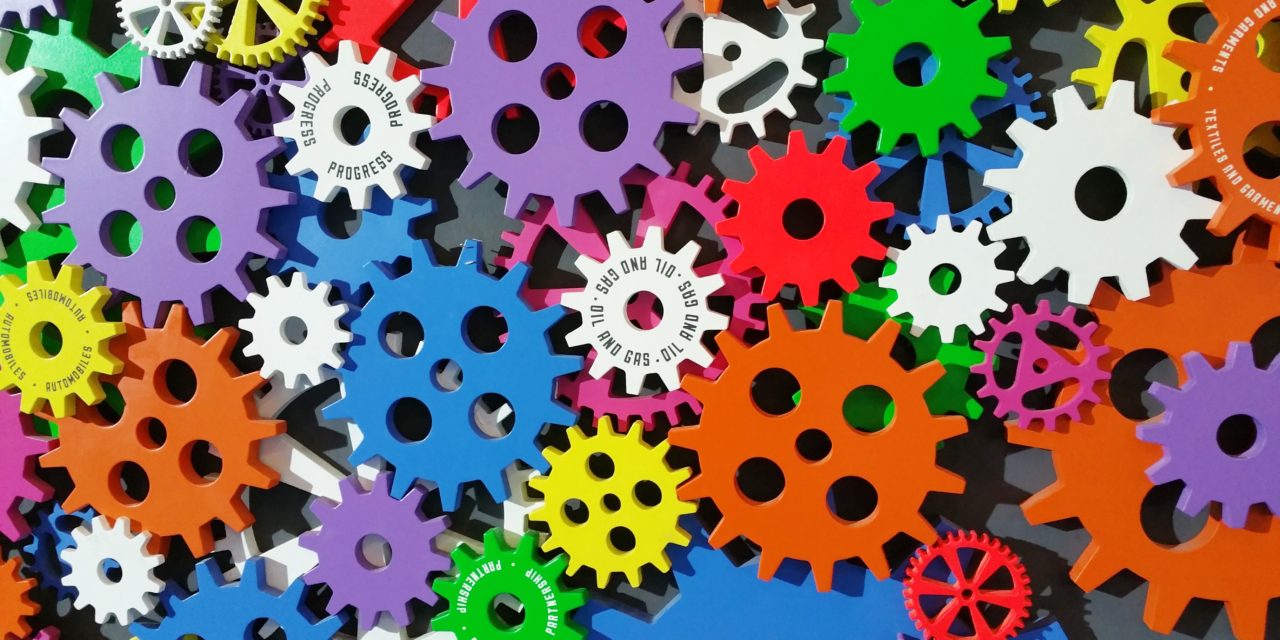Business Tip: Check your system before you blame your co-workers
In today’s work environment, there are many moving parts and people tasked with keeping the “Machine/System” running smoothly and efficiently. Sometimes “rub points” form where the system isn’t able to perfectly balance creativity and efficiency. This rub point can cause friction and potential seizing of progress if not identified and fixed.
One such rub point can be seen when creatives (designers, writers, and those creating art of any kind) and managers or supervisors meet. This is sometimes called the “Type A-Type B Struggle”, however this issue is deeper than stereotypical personality differences.
One side is tasked with creating new ideas, concepts, and products, while the other is tasked with keeping products flowing through the proofing, production, and delivery process. On paper, these two roles should mesh well, however if the system caters to one role more than another, a rub is inevitable.
What Creatives Need (Typically Type B leaning)
In order to create an environment where creativity is welcomed and flowing, management and “the system” must be structured around the creative process. Time, freedom, and trust are essential elements for a creative to thrive.
1. Time
Time is always a coveted resource in an organization. Making the most of it can look different to different people. Creatives use it differently and must be given enough time to not only create the product but also think it into existence. Sometimes this can look like a waste of time to Type-A leaning folks (the process driven employees). While creatives do need time, they also need realistic deadlines as well. Creatives can often struggle with perfectionism in their craft and will naturally find it hard to stop even then excellence is achieved. Having soft and hard deadlines explicitly stated at the beginning of a project will help a creative frame the creative process and lead to on-time results.
2. Freedom
The status quo is not always the enemy, but left unchecked it can often stand in the way of progress and excellence. True creativity and exploration is only possible when freedom is given. As long as deadlines are met and reputation is good, freedom must to be given to those whose products affect the direction of a department or business. Change, while often unpredictable, allows for increased opportunities and success. Freedom to create + flexibility to change = higher likelihood of success.
3. Trust
“Be the expert in the room”. Though this is an awesome thought, it can easily be forgotten when trust is not present. Creatives are hired to be an expert in their field. They have studied or have experience in their trade and should be treated as such. While their process can often be difficult to understand for others, trust of their expertise and experience needs to be given. When trust, freedom, and time are given to a creative, it is incredible the pieces they can produce and the propulsion they can bring to a company.
What Management Needs (Typically Type A leaning)
If we had creators only, we would end up with a pile of beautiful art, with no purpose. Managers and supervisors are the movers of these incredible pieces to the people who want and need them. These roles consist of monitoring progress, verifying customer satisfaction, and final delivery. These agents of the organization also have needs in order to keep the machine running smoothly, while enjoying their role. Constant communication, patience, and a plan helps managers thrive in their roles and part in making the customer happy.
1. Communication
When I say communication, I mean CONSTANT communication. The reason for this is because the brain of a manager (often process driven), works in due dates, progress reports, transition of pieces, etc. Because they work with so many moving pieces to produce a complete product for the client, they often see times of no communication as times of no work. While this is often a false assumption of the creative process, this is the perfect opportunity for the creative to meet the needs of the manager by providing a simple progress report. This cuts through the silence and helps the manager see that stuff is still happening even if no evidence is apparent. Ask any manager or supervisor and they will tell you, the more communication (if relevant) the better.
2. Patience
Managers and supervisors are often stuck between a rock and a hard place. They have clients or superiors breathing down their necks for updates and met deadlines, and creatives begging for more time to complete their work. This tug of war is where the majority of the rub points come from form. It is at this point where a decision is made to either cater to the management side or creative side. Each situation is different and needs to be treated as such. However, if a pattern starts to form one way or the other, this is a sign of a broken or breaking system and must be evaluated closely.
3. A Plan
Everyone likes a plan (even creatives). But what a plan means to a Type-A or process driven person is borderline religious (you know you’ve seen it or are that person). They thrive on action points, bulletined lists, and organized time lines. This is what helps them survive day to day. To keep a manager happy, give them a plan, anticipated deadlines, and checkpoints along the way.
How to Repair
Once the system is showing signs of wear, it can be a process to get it back up and running a peak levels. However, this process, no matter the time involved, is always worth it!
Step #1
Begin by Identifying the needs of the employees. Focus primarily on their job/role specific needs (time, communication, trust, etc.) Ask pointed questions about their “ideal” work environment and structure and Identify motivations.
One great way to do this is to open forums for discussion or have one-on-one interviews with individual employees. This will not only provide you the answers you seek, but will also boost morale and employee satisfaction.
Step #2
Once you have the motivations and needs of your employees identified, it is time to build steps into process to meet said needs. While these steps could vary by business, role, and person, here are a couple of examples. For creatives a set time of undisturbed quiet time could allow for increased creativity and focus on a project. For management, weekly progress reports from creators could be instituted to allow for ease of mind.
Step #3
Every system, process, or even tradition needs to be reevaluated on a regular basis to insure relevance, efficiency, and effectiveness. This review process can come in the form of team evaluations, round table discussions, and other feedback opportunities. It is important to create a safe environment for sharing and then get ready to record! Once the eval is complete – start back at Step #1.
In a Nut Shell
The machine, even if running for a few months or 50 years, will form rub points if not balanced well between creatives and management. Growth, change, and progress, while evidence of a healthy system, also affect the balance of the machine and should be closely monitored in order to maintain order, peace, and a healthy work environment for all its employees. Creatives and managers are better off together and are capable of so much more when they can effectively work to each other’s strengths and get the job done right!
Hope you enjoyed this week’s Business Tip Tuesday! Let me know what you thought, if you have any experiences like this, or any further suggestions.



Thanks, great article.